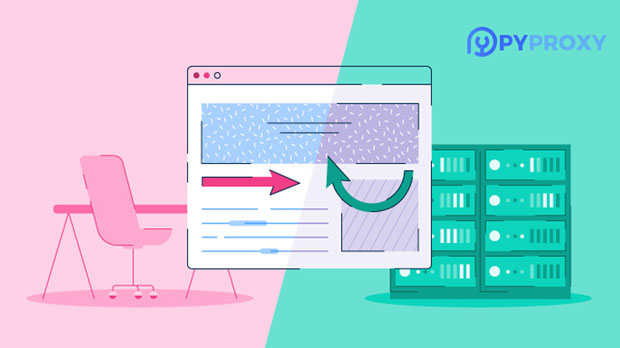In today’s digital world, using proxies has become an essential tool for enhancing online security, privacy, and enabling access to restricted content. However, when choosing a proxy service, especially wireless proxies, one must consider factors like stability, speed, and compatibility with different network providers. In this article, we will compare two popular proxy services, PYPROXY and Proxy4Free, and evaluate how each performs in terms of wireless proxy stability across various network operators. By understanding these differences, users can make informed decisions based on their unique needs, whether it's for accessing global content or maintaining secure browsing sessions. Understanding Wireless ProxiesWireless proxies are a form of proxy server that relies on mobile or wireless networks for data transmission. Unlike traditional wired proxies, which use physical cables, wireless proxies depend on cellular data or Wi-Fi connections to route traffic. The key challenge with wireless proxies lies in their stability, as the quality of service can vary significantly depending on the type of network (4G, 5G, Wi-Fi) and the operator’s infrastructure. In this section, we will outline the factors that affect the stability of wireless proxies, particularly when using services like PyProxy and Proxy4Free.Factors Affecting Wireless Proxy StabilityWireless proxy stability is influenced by several factors that can make a big difference in user experience. The primary factors include:1. Network Bandwidth and Speed: The speed of the network connection plays a crucial role in how fast and stable a wireless proxy performs. Higher bandwidth allows for faster data transfer, minimizing latency and improving overall browsing experience.2. Network Latency: Latency refers to the delay in transmitting data between the client and the server. High latency can result in slower response times and disruptions in the proxy connection, which affects stability.3. Signal Strength: The strength of the signal, whether from mobile networks (4G, 5G) or Wi-Fi, directly impacts the quality of the wireless proxy. A weak signal can cause frequent disconnections or slow performance.4. Network Congestion: During peak usage times, network congestion can occur, which leads to slower speeds and possible connection failures. Some networks are more prone to congestion than others.5. Operator Infrastructure: The quality of the network infrastructure and the operator’s ability to handle large amounts of data also affects wireless proxy stability. More robust networks are generally better at maintaining stable proxy connections.PyProxy vs Proxy4Free: A ComparisonBoth PyProxy and Proxy4Free are widely used proxy services, but they differ in terms of features, stability, and performance. Let’s examine how each service performs in terms of wireless proxy stability across different network providers.PyProxy: Strengths and WeaknessesPyProxy is known for offering a reliable and stable service for users seeking wireless proxies. However, its performance can vary depending on the network provider and the type of wireless connection.1. Stability Across 4G/5G Networks: On 4G and 5G networks, PyProxy generally offers good stability, provided that the mobile network is not overloaded. The 5G network, in particular, offers low latency and high-speed data transfer, making PyProxy an excellent choice for users on cutting-edge mobile networks.2. Wi-Fi Connections: When using Wi-Fi, PyProxy’s performance tends to be stable, but the quality of the Wi-Fi connection matters. For instance, on congested public Wi-Fi networks, users might experience slower speeds or intermittent disconnects.3. Network Provider Compatibility: PyProxy performs well across multiple network providers. However, some regional or less common network operators may experience occasional disruptions in service, which can affect the overall stability of the proxy.Proxy4Free: Strengths and WeaknessesProxy4Free, on the other hand, is a free proxy service that provides a variety of proxies for users, including wireless options. While it is a cost-effective solution, its performance may not always match that of premium services like PyProxy.1. Stability Across 4G/5G Networks: Proxy4Free’s stability on 4G and 5G networks can be inconsistent. While it works well on networks with high-speed data and low congestion, users on congested or low-coverage networks may experience slower speeds or even connection drops.2. Wi-Fi Connections: When used on a stable Wi-Fi connection, Proxy4Free generally performs decently. However, like PyProxy, it can suffer from congestion or interference in crowded networks, which negatively impacts its reliability.3. Network Provider Compatibility: Proxy4Free’s compatibility with network providers is also a mixed bag. Users on less stable or lower-tier mobile operators might face more frequent issues with connection stability and performance.Comparing Wireless Proxy Stability Between PyProxy and Proxy4FreeWhen comparing the two services in terms of wireless proxy stability, several factors stand out:1. Speed and Latency: PyProxy tends to outperform Proxy4Free in terms of speed and latency, especially on high-speed 4G and 5G networks. This is because PyProxy focuses more on optimizing its services for high-demand users, while Proxy4Free, being a free service, sometimes struggles with maintaining consistent speed.2. Network Compatibility: PyProxy offers a more stable experience across different network providers. Users with specific regional networks may notice more interruptions or slower speeds with Proxy4Free, while PyProxy works more reliably on a wider range of network operators.3. Performance on Wi-Fi: Both services offer similar performance on Wi-Fi networks, but PyProxy tends to be more stable under varying conditions. Proxy4Free’s free nature sometimes results in higher latency and more frequent disconnections on congested Wi-Fi networks.4. User Experience: PyProxy provides a more polished experience, especially for users who require consistent and uninterrupted service. Proxy4Free, though free, often comes with more limitations, especially for those who rely on wireless proxies for business or sensitive online activities.Conclusion: Which Service Is Better for Wireless Proxy Stability?When considering wireless proxy stability across different network providers, PyProxy stands out as the better choice for most users. Its consistent performance across 4G, 5G, and Wi-Fi networks, coupled with lower latency and higher speeds, makes it ideal for users who need reliable proxy connections. On the other hand, Proxy4Free may be more suitable for casual users who don’t mind occasional disruptions and are looking for a cost-effective solution.Ultimately, the choice between PyProxy and Proxy4Free comes down to user needs. If stability, speed, and performance are essential, PyProxy is the superior option. For users who prioritize a free proxy service and can tolerate some instability, Proxy4Free may still offer value.
Sep 25, 2025



































































